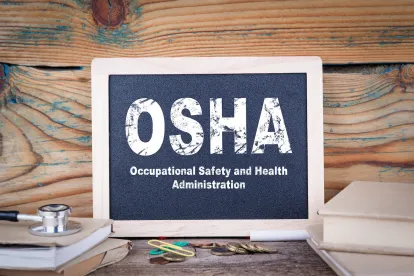On January 21, 2021, President Joseph R. Biden Jr. issued an executive order requiring the federal government to take “swift action” to protect U.S. workplaces from the COVID-19 pandemic. He ordered the U.S. Occupational Safety and Health Administration (OSHA) to, among other things:
-
consider, within the next two weeks, whether an emergency COVID-19 standard is necessary and, if so, to implement such a standard by no later than March 15, 2021.
-
issue within two weeks “revised guidance to employers on workplace safety during the COVID-19 pandemic”; and
-
review its current enforcement efforts, and “identify any short-, medium-, and long-term changes that could be made to better protect workers and ensure equity in enforcement.”
Revised Guidance
As noted above, the president has ordered OSHA to issue, within two weeks, “revised guidance to employers on workplace safety during the COVID-19 pandemic.” With one exception, employers should probably not expect anything markedly new, for OSHA under the Trump administration steadily updated its compliance guidance to employers.
The exception may be guidance stating that employers are expected to require employees to wear masks on the job, at least where social distancing is impractical or ineffective. One problem with such a move is that OSHA previously issued a statement indicating that scientific studies had not yet shown that masks were effective enough to be classified as personal protective equipment (PPE) and thus required by section 1910.132, OSHA’s PPE standard. OSHA may find it difficult to justify a different view, but this issue should be on employers’ radar screens.
An Emergency Temporary Standard?
The president has also ordered OSHA to “consider” whether an emergency temporary standard (ETS) on COVID-19, “including with respect to masks in the workplace,” is necessary. If it is found necessary, the president has ordered that the ETS be issued by March 15, 2021. He also ordered the Mine Safety and Health Administration (MSHA) to consider such an emergency temporary standard, but without a deadline for issuance.
Even so, it’s not a matter of whether OSHA will issue an emergency COVID-19 standard; it’s a matter of when. The new administration, on its first day in office, named James “Jim” Frederick as both deputy assistant secretary of Occupational Safety and Health and acting assistant secretary of Occupational Safety and Health, that is, head of OSHA. Frederick is a former United Steelworkers safety official, and his first and primary task at OSHA will be to get an emergency COVID-19 standard ready and onto the launch pad.
This aspect of the executive order comes as no surprise. On the campaign trail, Biden made COVID-19 one of his top priorities and promised to command OSHA to quickly implement an emergency standard to protect employees from COVID-19 in the workplace.
The executive order gives OSHA an unusually short time frame within which to issue an emergency standard; it normally takes the agency years and years to draft and implement a standard. OSHA has not issued an emergency standard since November 1983, when it created one for asbestos, which was struck down months later by the Fifth Circuit Court of Appeals.
Under the Occupational Safety and Health (OSH) Act, an ETS is issued without notice-and-comment rulemaking, which would further permit OSHA to meet the president’s March 15, 2021, deadline. Under the OSH Act, whatever OSHA publishes as the emergency temporary standard starts a rulemaking process on the final or permanent standard, with the emergency temporary standard acting as a notice of proposed rulemaking (NPRM). OSHA would then have six months to promulgate the final or permanent standard.
Again, employers should be on the lookout for a mask requirement in any such ETS. Another feature in such an ETS might be a vaccination requirement, but this is less likely.
One may question whether an ETS would be worth the effort to adopt. An ETS remains in effect for only six months and OSHA has had difficulty adopting such standards in the past and having them survive judicial review. To justify an ETS, OSHA must find “that employees are exposed to grave danger.” In a judicial challenge, a court may ask whether, by the time the ETS issued, the grave danger may have passed because so many employees may have already received vaccinations.
An ETS will also be difficult to draft in a way that substantially improves upon the efforts that OSHA is already making under the General Duty Clause and its already-existing standards, such as that for respirators.
Appointment of Jim Frederick
As noted above, and only minutes after the inauguration, President Biden installed Jim Frederick as deputy assistant secretary of OSHA and acting OSHA head. Amanda Edens remains the other deputy assistant secretary. No announcement has been made regarding a nominee for OSHA assistant secretary, that is, the head of the agency.
Frederick retired last year after 24 hours as assistant health and safety director at the United Steelworkers union. Frederick is expected to spearhead OSHA’s COVID-19 efforts.





 />i
/>i
